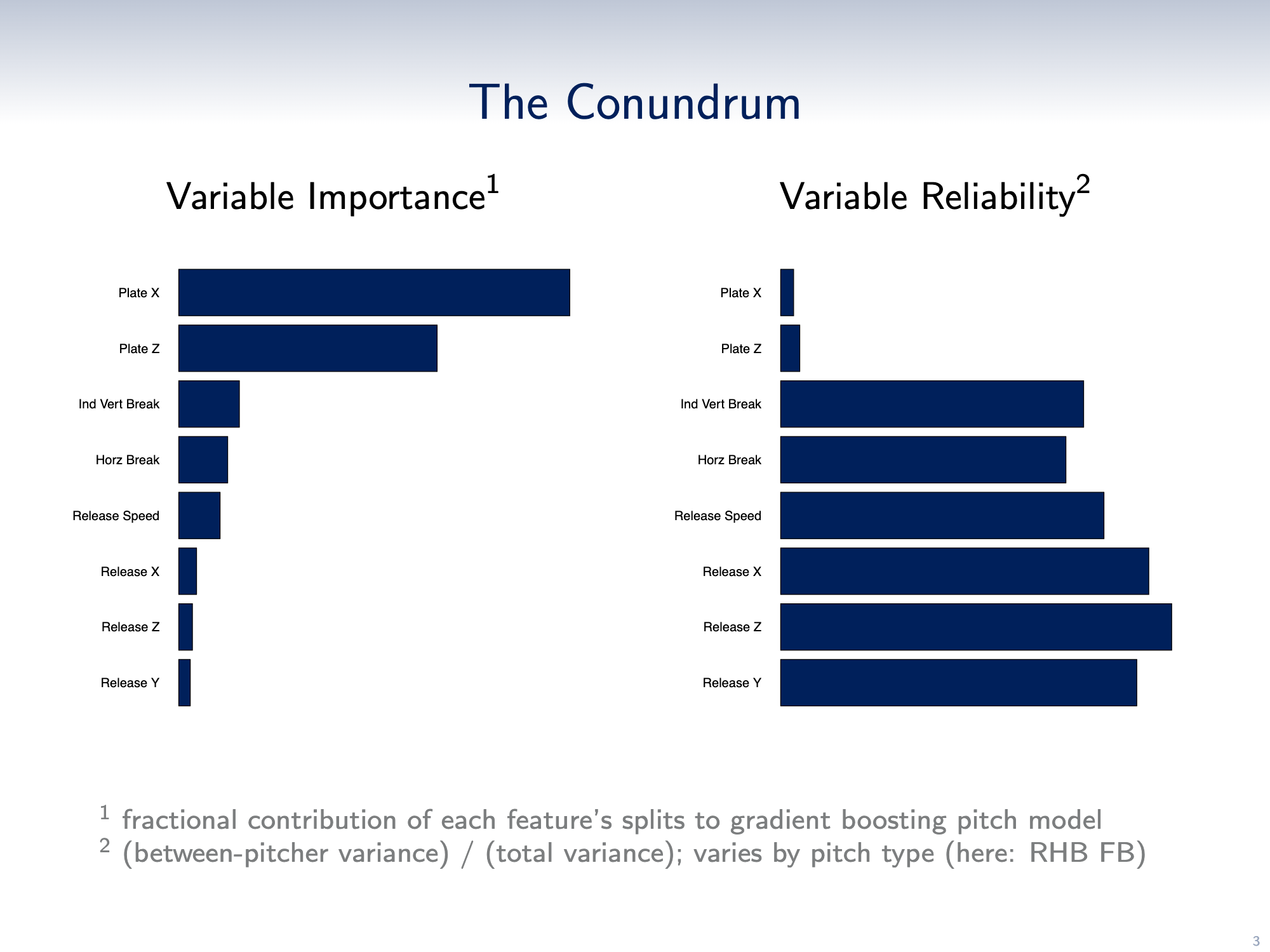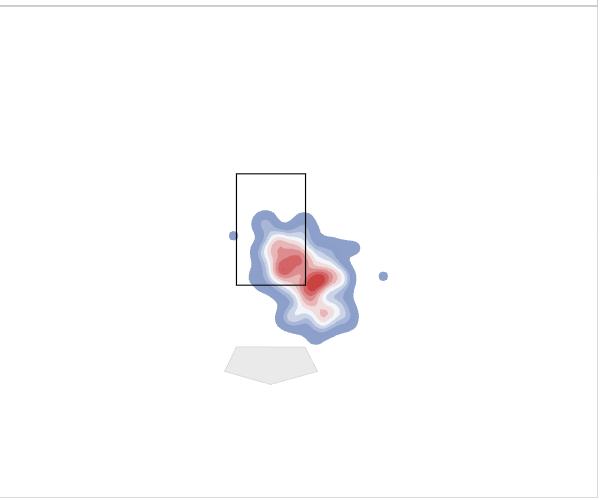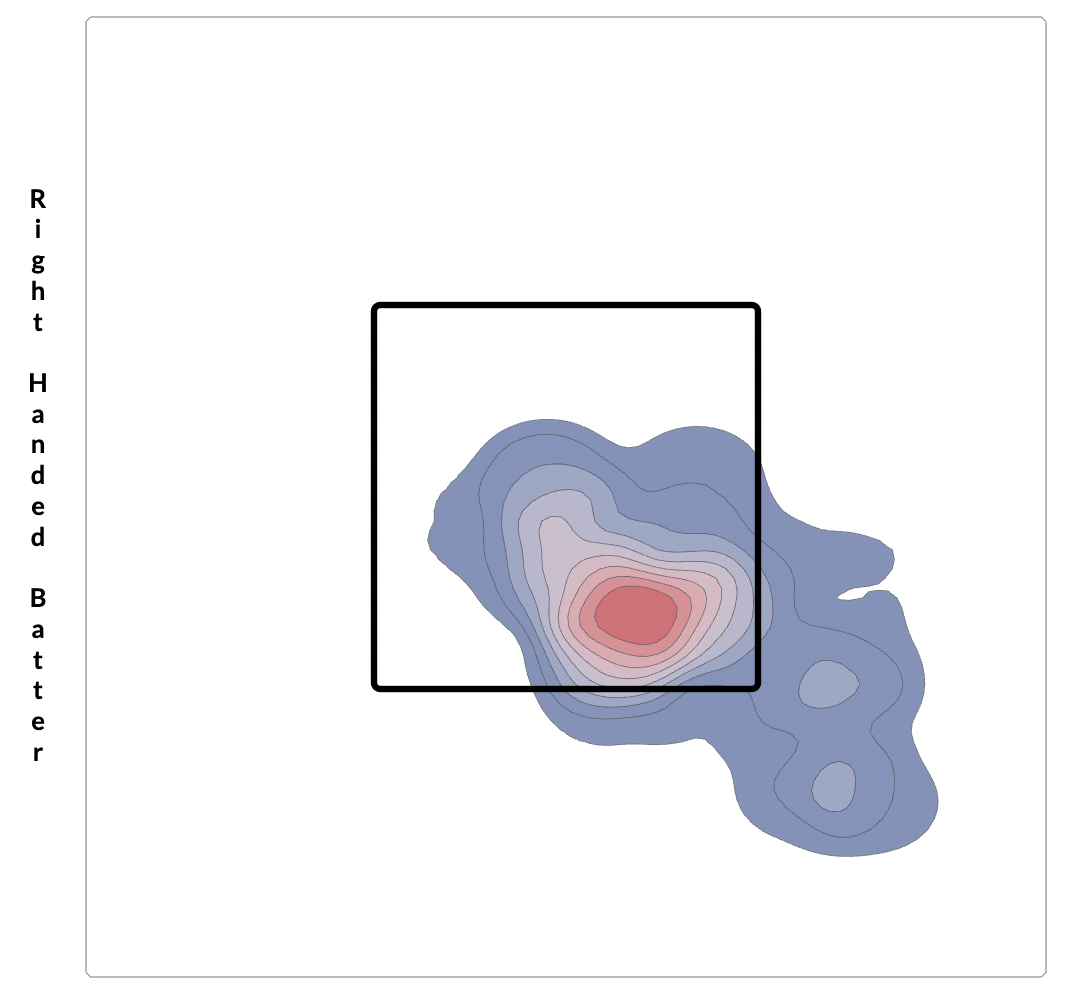
Within the introduction to their 2023 Saberseminar presentation, Scott Powers and Vicente Iglesias hit on a elementary reality about pitching: The variable that bests predicts the result of a pitch is the situation the place it crosses the plate. For a case research, look no additional than this tweet from MLB.com’s David Adler about Yoshinobu Yamamoto’s splitters.
Hitters have swung 74 occasions at Yoshinobu Yamamoto’s splitter this season …
38 of these swings are whiffs (51%)
One other 17 are foul balls
That leaves 19 balls in play
18 of these 19 are floor balls (95%)
Only one of Yamamoto’s splitters has been hit within the air pic.twitter.com/ggLR1qHYZW
— David Adler (@_dadler) April 22, 2025
If Yamamoto buries his splitter arm facet, he’s in all probability getting a whiff. If it’s on the sting of the zone, it’s probably a foul ball. If it catches plate, it’s getting put in play. The placement dictates the result.
Given this reality, pitchers who command the ball greatest should dominate. However there’s a catch. As Powers and Iglesias famous, the situation can be the variable with the least predictive reliability. For those who see a pitcher throw a fastball 98 mph, you could be fairly certain he’s going to do it once more. A dotted backdoor slider, then again, doesn’t assure a whole sport of dotted backdoor sliders. Command is each a very powerful and the least dependable high quality for a pitcher.

No person can nail the corners with each pitch. However pitchers can not less than decrease the variance of their places, discovering relative reliability throughout the chaos of command. And in 2025, there’s maybe no person extra dependable than Jacob deGrom.
deGrom’s flat assault angle fastball and agency slider have (justifiably) constructed his popularity as a stuff monster. Even after easing up on the gasoline pedal this season, deGrom continues to be a darling within the eyes of the fashions. His general Stuff+ is within the eightieth percentile for starters with not less than 30 innings pitched, fueled by his depth-y 89-mph slider. PitchingBot likes deGrom much more, rating him within the prime 10 amongst these pitchers. Over at Baseball Prospectus, the StuffPro mannequin believes deGrom wields 4 pitches — his curveball and changeup, along with the heater and slider — that each one grade out as plus.
However stuff is now not deGrom’s carrying device. Presumably as a perform of his choice to throw slower, presumably as a optimistic consequence of getting older, deGrom’s standout ability today is his command.
deGrom’s unbelievable precision got here to my consideration whereas writing about Hunter Gaddis for a bit that was revealed on Monday. As a part of my effort to discern whether or not Gaddis owed his early-season success to slider command (the decision: inconclusive), I created a model of the Kirby Index for sliders to see the place he landed. That metric measured the variance in launch angles and launch factors and distilled these figures right into a single rating that captured command skill. Initially, it was designed for fastballs, which are usually thrown to all elements of the strike zone. It maybe works even higher for sliders, which usually are thrown to fewer targets. Gaddis’ rank amongst his fellow pitchers was nothing exceptional, however deGrom’s identify sitting on the very prime caught my consideration.
Kirby Index (Sliders)
SOURCE: Baseball Savant
Minimal 50 sliders thrown to right-handed hitters.
As I wrote earlier this 12 months, a extra easy implementation of the Kirby Index can be to only measure the variance of the particular pitch places. For this story, I calculated the usual deviation of the vertical and horizontal places of a given pitcher’s sliders; as soon as once more, deGrom discovered himself on the prime of the pack. Take a look at how a lot distance there’s between him and the subsequent closest pitcher:
Location Variation (sliders)
| Participant Identify | Horizontal Location (St Dev) | Vertical Location (St Dev) | Total (St Dev) |
|---|---|---|---|
| Jacob deGrom | 0.525 | 0.498 | 0.724 |
| Merrill Kelly | 0.595 | 0.586 | 0.835 |
| Zac Gallen | 0.616 | 0.565 | 0.836 |
| Corbin Burnes | 0.556 | 0.671 | 0.871 |
| Jack Flaherty | 0.575 | 0.659 | 0.874 |
| Bryce Elder | 0.514 | 0.713 | 0.879 |
| Zack Littell | 0.574 | 0.719 | 0.920 |
| Luarbert Arias | 0.543 | 0.755 | 0.930 |
| Enyel De Los Santos | 0.732 | 0.619 | 0.959 |
| Dylan Lee | 0.493 | 0.827 | 0.962 |
SOURCE: Baseball Savant
Minimal 50 sliders thrown to right-handed hitters.
Random tangent right here, however you must admire Luarbert Arias for refusing to throw his junky 82-mph slider anyplace however contained in the strike zone.

Anyway, measuring location densities, finally, might simply level at pitchers who refill the strike zone; the true check of command is a pitcher’s skill to hit his precise goal. To that finish, Driveline Baseball offered me with a pattern of their proprietary miss distance information. Utilizing Inside Edge monitoring information, Driveline measures the gap from the supposed goal to the precise location of the pitch.
No shock — deGrom’s slider miss distance ranked first amongst all pitchers. The league-average miss distance for sliders is about 12.5 inches; this 12 months, deGrom is lacking his goal by below 9 inches, almost three normal deviations under the typical. Any means you slice it, deGrom is commanding his slider like nobody else within the sport.
The outcomes have been unassailable. Up to now, deGrom’s slider has returned a run worth of -3.2 per 100 pitches thrown, one of the best mark for any slider thrown by a beginning pitcher. Not solely is he getting a bunch of swing and miss — a 38.1% whiff fee, as of this writing — it’s additionally grabbing a ton of known as strikes. When batters do handle to place it in play, they will’t do a lot with it. The common launch angle on the pitch is simply 2°; the xwOBA is a meek .227.
The innocent outcomes on balls in play are a perform of deGrom’s targets. To right-handed hitters, he targets the traditional low-away nook, breaking off the plate. Word the bimodal distribution on the heatmap — there’s a big focus of sliders he’ll throw within the zone for strikes, after which one other cluster proper under the zone that generate chase.

These intentions could be seen within the filtered heatmap clusters. When deGrom throws sliders to righties in zero-strike counts, he tends to be within the zone:

In two-strike counts, he chases the swing and miss:

To lefties, deGrom reveals the same bimodal distribution, however the sample seems reversed. In early counts, he’s aiming slightly below the zone; in late counts, he’s in search of known as strikes. This sequence to Athletics rookie Nick Kurtz, which featured 4 sliders, provides a way of the method. On 1-0 and 2-0, deGrom tries to bait a chase, however the massive lefty resists.
Down 3-0, deGrom fires a middle-middle heater in an auto-take state of affairs, then returns to the slider in a 3-1 rely. Right here, deGrom dials in his robotic precision, dotting the decrease fringe of the strike zone to carry the rely full.
On 3-2, he goes there once more. Kurtz takes it and pays the value. Although the superimposed strike zone on the published says this pitch is simply low, my sense is he deserves that decision; if he’s persistently touchdown pitches inside inches of his supposed goal, you kind of simply have at hand it to him.
deGrom isn’t simply portray with the slider. I calculated the Kirby Index for four-seam fastballs thrown to righties in 2025; extremely, he additionally sits in first place on that listing.
Kirby Index (Fastballs)
SOURCE: Baseball Savant
Minimal 50 fastballs thrown to right-handed hitters.
As good as it could be to suppose that deGrom could be simply pretty much as good even after dropping two ticks off the fastball, it simply isn’t true. Absent enchancment elsewhere, shedding stuff will carry him again to Earth. However deGrom is way from stagnant. In 2019 — his final full massive league season, amid essentially the most dominant part of his profession — his fastball command measured as under common by miss distance. Six years later, it’s laborious to argue his command is something however 80-grade. And so long as the elbow cooperates, it is going to assist him defy gravity.
